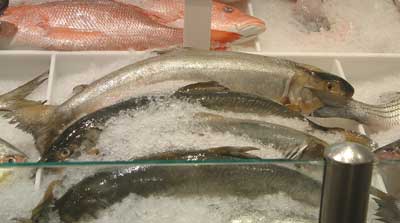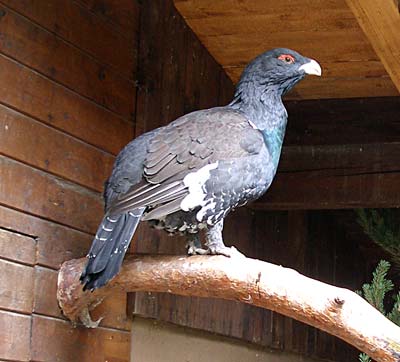The best known of the German brandies, produced on the Rhine at Rüdesheim. It is usually aged in Limousin oak. This is a brandy conforming to the highest national standards in Germany and is labelled as weinbrand. A lesser brandy may be called only a branntwein aus wein.

Char(r) usually refers to the Arctic char, an uncommon freshwater fish of the same family as salmon, trout and related to grayling and the vendace or powan. It is found in rivers and lakes of northern Europe, north western United States and Canada and in the Great Lakes. They are migratory fish, like salmon and trout. They have a steely blue-grey back with salmon-pink speckles on the sides and a red underbelly. They have sweet firm flesh which varies from white to pink, dependent upon its own diet, and with good flavour, some say better than trout, being something like a cross between trout and salmon.

Capercaillie. Black cock. Wood grouse. This large, grouse-like game bird is found in coniferous woodland hills of Scandinavia and Baltic countries, Scotland, the former Yugoslavia and Central Europe with some in the Pyrenees. They are usually found on the floors of coniferous forests during summer and up in the trees in winter.
Woodland sorrel. Flowers, leaves and pods can be eaten and have quite a tangy flavour and are sometimes added to salads, or can be chewed as they are said to have thirst-quenching qualities. This has resulted in the leaves being used to make a lemony drink or it may be brewed as a herbal tea, though the flavour is a little dull. Apparently the juice can be used as a substitute for vinegar.